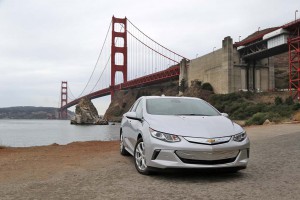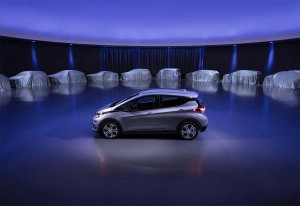General Motors is reportedly looking at unplugging the Chevrolet Volt, although the world’s first mass-market plug-in hybrid might remain in production until the end of its current lifecycle, around 2022, according to a report by AutoForecast Solutions.
The move would reflect not only sluggish sales but also a shift in strategy by GM. When the Volt came to market in 2010 many experts believed that plug-in hybrids would be the wave of the future. But as batteries become cheaper, more powerful and quicker to charge there’s a growing push for pure battery-electric vehicles, or BEVs like the Chevrolet Bolt EV.
GM was expected to add several spin-offs based on the Volt plug-in hybrid-electric vehicle, or PHEV, but none has been forthcoming. Instead, the Detroit automaker now says it will launch another two BEVs over the next 18 months, with at least 20 all-electric or fuel-cell-powered models due out by 2023.
The Chevy Volt was a breakthrough product when it came to market in 2010. It allowed a motorist to drive in all-electric mode for around 30 miles, on average. For longer drives the car’s four-cylinder gas engine would then kick in, eliminating so-called range-anxiety. Significantly, GM said owner data indicates first-gen Volt owners drove an average of about 700 miles between fill-ups, meaning they primarily operated in EV mode most of the time.
(EV buyers given lucrative reprieve by Congress. Click Here for the story.)
The second-generation Volt upped the EV range to 53 miles per charge, and GM is estimating drivers will travel an average 900 miles between fill-ups. The new version is also roomier, more stylish and faster off the line.
It also has more competition from manufacturers as diverse as Hyundai and Mercedes-Benz, the German manufacturer now offering 10 different PHEV models worldwide.
But so far, the flood of new products hasn’t delivered the anticipated market momentum. The launch of the second-generation Volt did bring a 60% increase in demand in 2016, but sales for the first 11 months of 2017 fell 12% year-over-year.
(Click Here for our first drive in the 2018 Nissan Leaf.)
There’s been speculation for some time about Volt’s future. It didn’t help that Cadillac was unable to sell a more luxurious take on the gen-one Volt, the Caddy ELR. Back in April of this year, reports surfaced that GM might kill off six slow-selling models, including four produced at the same Detroit assembly line: the Volt, Buick LaCrosse, Cadillac CT6 and Chevrolet Impala.
The Volt might not vanish entirely – or, at least, its PHEV drivetrain might stick around. Some reports indicate GM is considering shifting to a crossover-style body. That would surprise no one considering the collapsing market for sedans, coupes and hatchbacks. Utility vehicles, on the other hand, now account for about half of all new vehicle sales in the U.S. And ute sales are surging in most other key markets, from Beijing to Berlin.
By the same logic, GM is reportedly taking a closer look at the pure battery-powered Chevrolet Bolt EV. It is now outselling the Volt – as well as the Tesla Model 3 – and demand has been growing since Chevy began offering Bolt in all 50 states. But the BEV has been faulted for its styling and though GM officials have tried to label it a “crossover,” it clearly doesn’t hit the heart of that market.
(To see predictions that GM will make the first profitable EV, Click Here.)
What’s clear is that GM will try to be more on target when it brings its next pure electric models to market. At least one, if not both, of the models due by 2019 will feature crossover-utility vehicle designs. Looking further out, GM is still trying to get a clear sense of where the market will be by 2023, when it promises to have 20 all-electric offerings (including fuel-cell vehicles) in production. But by removing the fuel economy issue from the equation, all-electric SUVs and CUVs should help keep the ute market booming.




Eisenstein hit the nail on the head : cheaper batteries have rendered the complicated and expensive Volt fual drivetrain architecture no longer economically feasible. In engineering, simpler is always better, cheaper, more reliable.